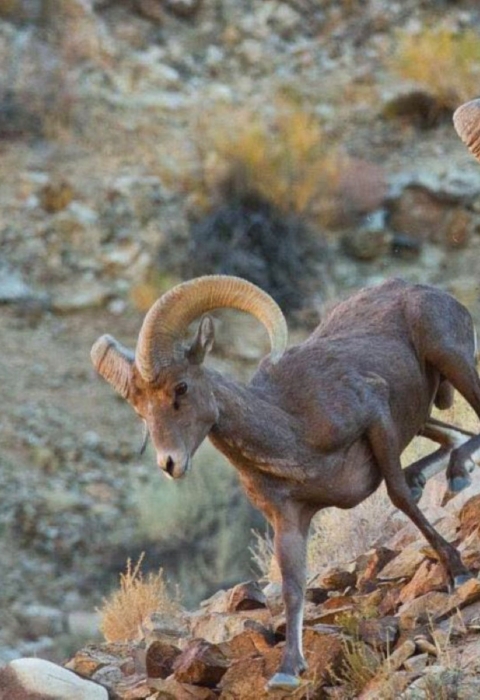Overview
The Peninsular bighorn sheep (Ovis canadensis nelsoni) is a distinct population segment of a desert bighorn sheep subspecies. The population occurs in the Peninsular Ranges in Southern California, from the San Jacinto and Santa Rosa mountains, and south to the United States-Mexico border. It was listed as endangered in 1998, and ongoing threats to the species come from the habitat loss and fragmentation that are associated with development. This species is also negatively impacted by human-related disturbances like off-highway vehicles, hiking and mountain biking. This species is further impacted by non-native invasive plants, fire suppression and catastrophic fire. However, due to captive breeding, wild augmentation, conservation of habitat and other recovery efforts, the rangewide population estimate of 335 individuals, at the time of listing, had increased to 884 by 2016.
Scientific Name
Identification Numbers
Characteristics
Physical Characteristics
The Peninsular Ranges population of bighorn sheep is a medium-size bovid with a muscular body and thick neck.
Its color varies from dark brown to pale tan, with a white belly, rump patch, back of legs, muzzle and eye patch. They have a short, dark brown tail. The ram has massive brown horns that curve up and back over the ears, then down, around and up past the cheeks in a c-shaped curl. The ewe has short, slender horns that never form more than a half-curl.
Food
The Peninsular bighorn sheep eat a variety of plants like shrubs, forbs, cacti and grasses.
Behavior
Peninsular bighorn sheep are restricted to east-facing, lower elevation slopes, typically below 4,600 feet. They require steep topography for lambing, rearing and escaping predators. This open terrain helps them to detect predators and find water.
Timeline
Explore the information available for this taxon's timeline. You can select an event on the timeline to view more information, or cycle through the content available in the carousel below.
20 Items